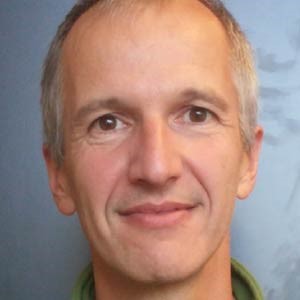
Events

Events
Title: Synthesis of porous carbon materials and nanocomposites C/M and C/MXn (M= metal, X=C, N, O, S) by hard- and soft-template routes
Speaker: Dr. Julien PARMENTIER, Institute of Material Sciences of Mulhouse (IS2M), University of Upper-Alsace (UHA), Mulhouse, France
Time: 10:00 to 10:40, Wednesday, Oct.24, 2018
Place: F207, School of Mechanical Engineering
Host: SHANGGUAN Wenfeng, Professor (Institute of Internal Combustion Engine)
Short Bio:
1. EDUCATION
2007 Accrediation to supervise Ph. D research (UHA, France)  1992- 1996 Ph.D., Solid State Chemistry. University of Strasbourg, France .
1992- 1996 Ph.D., Solid State Chemistry. University of Strasbourg, France .
1991-1992 Master Degree in Material Chemistry (University of Strasbourg, France)
2. EMPLOYMENT
1999-present Associate Professor at University of Upper-Alsace (UHA) and Institute of Material Sciences of Mulhouse (IS2M) 1998-1999 Research Associate at the department ‘Ingeniera dei Materiali ‘ University of Trento, Italy
1996- 1998 “Research Associate” in the Mechanical, Material and Manufacturing Department, Materials Division (University of Newcastle, GB).
1992-1994 Ph.D. thesis in the Institute of Physics and Chemistry of Strasbourg (IPCMS, University of Strasbourg, France )
Abstract:
Optimized performances of materials require a strict control of their physicochemical characteristics such as composition, porosity, structure and macroscopic shape. In this context, carbonaceous materials have been developped using hard and soft-template routes. Both routes are based on porogen agents (templates) to control the porosity. Additionnal material functionnalities can be introduced by the presence of nanoparticules. For that purpose, an original one-pot process based on the soft-template route was investigated for the preparation such nanocomposites with nanoparticles embedded within the porosity. Versatility of the process was demonstrated with formation of nanoparticles of different compositions (metal, carbide, nitride, oxide and sulfur). Growth of those nanoparticle in confined media leads in some case to peculiar particle morphology (e.g. inorganic fullerene for WS2). Relationships between synthesis conditions, properties and performances for applications related to energy storage, gas separation and catalysis are examplified.


Shanghai Jiao Tong University
Address: 800 Dongchuan Road, Shanghai
200240